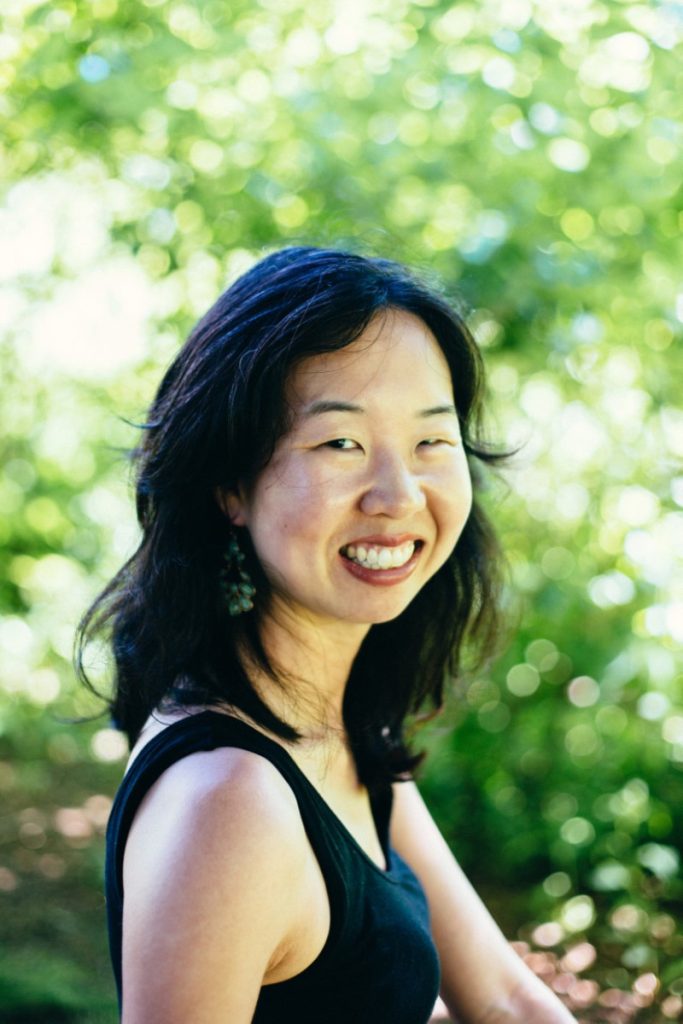
“So often, women of color transform to accommodate or survive.”
In “The Winter Forecast,” the fashion runway becomes a hibernating place. As a California poet, I was thinking about winters elsewhere, the ones I first saw in children’s books and experienced when I lived in New York City in my twenties. Those winters were a shock to me as someone who grew up with evergreens—the quiet of snowfall, a bare forest, the mysterious, shapeshifting dark.
Writing this poem came at the end of editing my first book last year, as the final piece in a seasonal fashion series that originated in graduate school in 2012. The series demarcates the end of each section of my book, beginning with summer and closing with spring. The set of four poems provides a playful, visionary space to offset the more personal poems, which consider women speakers independent of their relationships—separate from family, motherhood, and marriage. I was interested in writing more associatively about women gathering and using fashion (free from capitalism and all of its harms in Poetry Land) to express exuberant femme possibility.
So often, women of color transform to accommodate or survive. The models have minds of their own, wandering off the page, blurred by the snow.
I wanted to make these poems safe spaces, but found that I couldn’t write about winter without thinking of Persephone, or imagine the woods without recalling the imperiled heroines of the fairy tales and Disney films I grew up with in the 1980s—Snow White, Sleeping Beauty, Alice in Wonderland, Beauty and the Beast, The Snow Queen. From a young age, I was immersed in and fascinated by these landscapes, and aware of how beauty and violence were intertwined when women were out in the world, away from the family home.
The models in the fall and spring forecast poems reflect this liminal state of transit. The summer and winter sister poems are about dwelling in landscape—a flower field or an erased one.
I am a slow writer and attempted to write “The Winter Forecast” various times over several years. What clicked was scavenging my poem debris notes for transformative sparks—lessons about language from other poets, piano music programmed using data from tree rings (check it out), learning the Russian word for their nesting dolls (another childhood reminder)—and orchestrating them with recurring images and themes within the series.
Since I opted to remove my collection’s title poem, I see this poem as the secret title poem, a culmination of the book’s obsessions.
The series also reflects how fashion was once a great love when I lived in New York. While I was by no means embedded in the industry, I attended Parsons School of Design and FIT, covered fashion for NYLON magazine’s website, and was an avid Project Runway fan.
In returning to poetry for graduate school, one of the first poems I loved was “Dirge with Cutlery and Furs” by Sally Wen Mao (first published in Linebreak and included in her second book, Oculus), addressed to the late South Korean model Daul Kim. I was deeply moved to discover an Asian American woman poet writing in mourning for another Asian person, and in awe of how she crafted a poem about a fashion model with such tenderness and paillette-sparkling charm.
In using the monostich form, each line is its own edge, spiked. Women appear and disappear in tandem with faceting observations and questions.
I always thought of the ocean like a mother, but it is the sea, water surrounded, that is feminine in French.
In winter, there is the presence of absence, which spurs curiosity and wonder. What is beauty in the darkest season? What glitters? It makes you look again.
Shelley Wong is the author of the forthcoming As She Appears (YesYes Books, May 2022) and the chapbook RARE BIRDS (Diode Editions, 2017), as well as the winner of the 2019 Pamet River Prize. Her poems have appeared in American Poetry Review, Best American Poetry, Kenyon Review, and the New Republic. She has received a Pushcart Prize and fellowships from MacDowell, Kundiman, and Vermont Studio Center. She is an affiliate artist at Headlands Center for the Arts and lives in San Francisco.